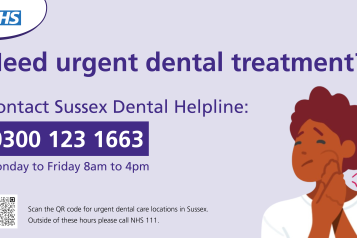Our Information and Signposting service including our telephone service will be closed from 2pm on Tuesday 23rd December, reopening at 10am on Friday 2nd January 2026.
For a response in the new year, a voicemail service will be available for you to leave a message (0333 101 4007), or you can email: enquiries@healthwatcheastsussex.co.uk












